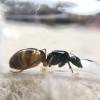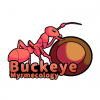I am wondering if there is a check sheet, or a formal method used in identifying ants. Has anybody put together a method where a person can go from step to step? Like maybe look at the ant and check for one or two nodes? You now have two smaller groups. Next step look at colors Next step check ? ? ? ? Etc.
I have watched several U-tube videos and it looks like some people can see an ant running down a sidewalk and immediately ID it. How?
Is it mainly done by being familiar with the ones that are in the area, or do they go through some sort of mental check list, like color here and there, size, nodes , etc.
I'm just starting at trying to be able to ID some. I'm over whelmed and unsure of a reasonable approach Is there a good place to start?
Thanks





















